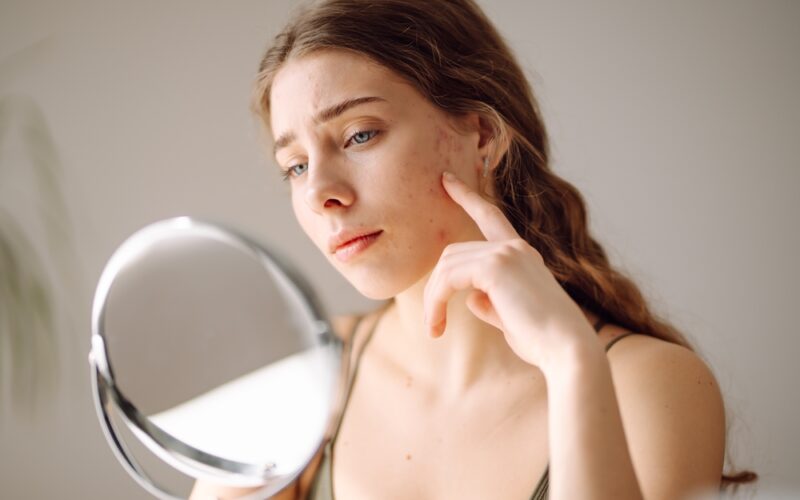For millions struggling with persistent acne that resists conventional treatments, rapamycin represents an emerging therapeutic option. Originally developed as an immunosuppressant for organ transplant patients, research now suggests this compound may offer significant benefits for inflammatory skin conditions, including stubborn acne.
How Does Rapamycin Work in the Body?
Rapamycin works primarily by inhibiting the mammalian target of rapamycin (mTOR), a protein that regulates cell growth, proliferation, and metabolism. When overactivated, the mTOR pathway can contribute to several processes involved in acne development.
By suppressing mTOR activity, rapamycin reduces excessive skin cell proliferation that leads to clogged pores, normalizing the skin’s renewal process and potentially preventing comedone formation. The anti-inflammatory effects of rapamycin reduce pro-inflammatory cytokines and immune cell activity, addressing the redness, swelling, and pain associated with inflammatory acne lesions.
Research shows mTOR also regulates sebum production, a key factor in acne development. Rapamycin and sebum production have an important relationship – the medication may reduce sebaceous gland activity, directly addressing one root cause of breakouts. Additionally, rapamycin possesses antimicrobial properties that may help combat Cutibacterium acnes bacteria, offering a multi-faceted approach to acne treatment.
Rapamycin’s Effects on Acne and Skin Inflammation
Laboratory research and early clinical studies support the potential of rapamycin for treating inflammatory acne. In controlled studies, it has demonstrated several beneficial effects:
- Decreased sebum production, addressing excessive oil that contributes to acne
- Reduced inflammatory response, which may help treat painful lesions and potentially reduce scarring
- Regulated skin cell turnover, preventing the pore blockages that initiate acne
- Antimicrobial activity against acne-causing bacteria
Clinical studies, though limited, show promising results. One small study demonstrated that topical application reduced inflammatory lesions in patients with facial acne, while another showed significant improvement in sebaceous gland disorders.
This treatment may be particularly valuable for severe or resistant cases. Emerging research suggests mTOR inhibition and acne treatment may benefit patients who haven’t responded to traditional treatments like antibiotics, retinoids, or hormonal therapies.
How to Use Rapamycin for Acne Treatment
Rapamycin can be administered topically or orally for acne treatment, though topical application is more common and generally safer. Topical formulations typically come in concentrations ranging from 0.005% to 1% in cream, gel, or solution form. Benefits of topical application include minimal systemic absorption, direct delivery to affected areas, and fewer side effects than oral administration.
Some compounding pharmacies create custom formulations based on dermatologist prescriptions. Standard application involves once or twice daily use after cleansing, with improvement typically taking several weeks to become apparent.
Oral administration is less common due to potential systemic effects but might be considered for severe, resistant cases with substantial inflammation. Dosages are typically much lower than those used for transplant patients, often starting at 0.5-1mg daily or every other day.
Importantly, this medication requires a prescription and medical supervision. Self-medication is dangerous and inappropriate when considering how rapamycin affects skin health.
Side Effects and Risks
While showing promise for acne, rapamycin has potential side effects that vary between topical and oral administration.
Topical application typically causes mild side effects such as skin irritation, redness, dryness, or peeling. These usually diminish with continued use or application adjustments.
Oral rapamycin carries more significant risks: immunosuppression increasing infection risk, elevated cholesterol, delayed wound healing, mouth sores, and potential interactions with many medications.
Certain individuals should avoid this treatment: pregnant or breastfeeding women, those with compromised immune systems, liver or kidney disease, or a history of poor wound healing.
Long-term effects of rapamycin specifically for acne have not been extensively studied. It’s worth noting that it is not FDA-approved specifically for acne; its use for this purpose is considered off-label.
Conclusion
Research on rapamycin presents an exciting frontier in dermatology. Through mTOR inhibition, this treatment addresses multiple factors involved in acne development—excessive sebum production, inflammation, abnormal skin cell turnover, and bacterial proliferation.
For patients with treatment-resistant acne, rapamycin therapy may offer a valuable alternative when conventional treatments fail. Its anti-inflammatory effects make it particularly promising for inflammatory acne that hasn’t responded to standard approaches.
However, treatment requires realistic expectations and medical supervision. Results vary between individuals, and optimal use involves careful patient selection and proper formulation.
As research continues, we’ll better understand the long-term effectiveness of this approach and which patients benefit most from it.
If you’re struggling with persistent acne and interested in exploring innovative treatment options, schedule a consultation with Heally today. Our network includes dermatologists knowledgeable about cutting-edge treatments who can help determine if rapamycin might be appropriate for your specific skin concerns.
Sources
IJDVL: Mammalian target of rapamycin (mTOR) inhibitors in dermatology
NIH: Targeting Inflammation in Acne: Current Treatments and Future Prospects
Wiley Online Library: Mechanistic target of rapamycin (mTOR) expression is increased in acne patients’ skin
Book Free Consultation
Book Free Consultation

